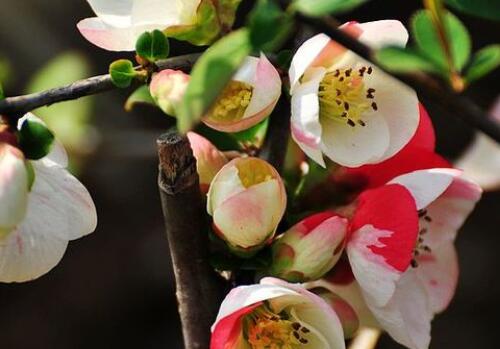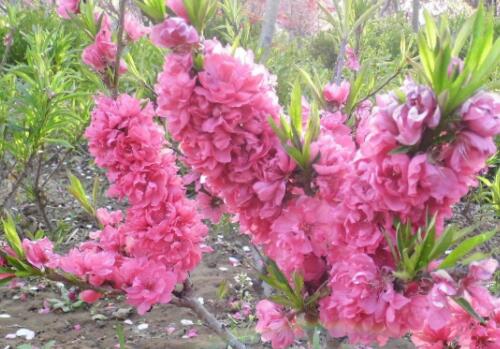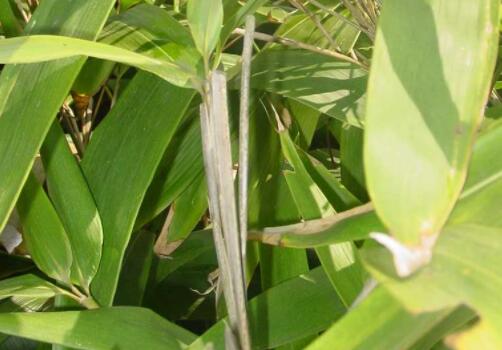How much is the price of small Arbor papaya and begonia bonsai? When will it blossom and bear fruit? Can its fruit be eaten? Breeding prescription
Papaya begonia, also known as hairy leaf papaya, papaya, deciduous shrubs to small trees, 2-6 meters high. Raw slopes, forest sides, roadsides, cultivated or wild, 9-2500 m above sea level. How much is the price of papaya and begonia bonsai? When will it blossom and bear fruit? Can its fruit be eaten? What are the breeding methods? It is learned from Jiangsu seedling base that the price of rice diameter 15 is about 1100 yuan / plant, that of rice diameter 12 is about 550yuan / plant, that of rice diameter 10 is about 360yuan / plant, and that of rice diameter 8 is about 180yuan / plant.

When will papaya begonia blossom and bear fruit?
According to the data of Rosaceae, the first leaves of flowers are open, 2-3 clusters are born on biennial branches, the pedicels are short and thick or nearly sessile; the fruit is ovoid or subcylindrical, with protuberance at the apex, 8-12 cm long and 6-7 cm wide, yellow with redness and fragrance. The flowering period is from March to May and the fruiting period is from September to October.
Can the fruit of papaya and begonia be eaten?
The fruit of papaya and begonia can be eaten.
The fruit of papaya and begonia is made into candied fruit after cooking; it can also be used as medicine, which has the effects of driving wind, relieving muscles, relieving pain, relieving alcohol and phlegm, eating and relieving dysentery.
What are the breeding methods of papaya and begonia?
The main results are as follows: 1. The best propagation time is before budding in early spring or after defoliation in early winter.
2. The best growing soil: it has wide adaptability to soil, but requires loose soil, good air permeability and low groundwater level.
3. Growth humidity requirements: like warm, humid and sunny environment, resistant to cold.
4, the best growth temperature: cold resistance, so when the winter is minus 15 degrees crabapple flowers can still grow very well, will not be frozen, can be put outside for the winter. However, when the cold is abnormal, protective measures should be taken.
5, the best growth light: begonia flowers like the sun, suitable to grow in a sunny environment, it will grow badly in a cool place. Family-raised potted plants should be taken care of in a well-lit place when they are in the growing period.
Note:
1. Apply fertilizer: in autumn, after the leaves fall, you must apply a large amount of fertilizer to replenish the nutrients it has lost, so that it can stay healthy. When the spring buds sprout, they should apply organic fertilizer once and water it once. Fertilization should be different depending on the age of the tree.
2, watering key points: begonia flowers are also famous for their resistance to drought, so do not water too much at ordinary times, and avoid stagnant water in the soil, otherwise excessive moisture will lead to rotten roots and yellow leaves.
3. Pruning essentials: begonia flowers can be pruned after falling leaves to before sprouting in early spring to cut off withered branches, disease and insect branches to keep the crown open, ventilated and transparent. In order to promote the vigorous flowering of the plant, the long branches should be cut short, so that the remaining axillary buds can get more nutrition, so as to reduce the nutrient consumption and form more flowering and fruiting branches. During the growth period, if the heart can be removed in time and the vegetative growth is restricted in the early stage, the effect will be more significant.
4. pot soil replacement: papaya begonia is still a commonly used bonsai tree species, which is suitable for making different forms of bonsai, such as direct dry type, oblique dry type, double dry type, curved dry type, water-facing type, exposed root type, jungle type, multi-dry type and so on. The shape of the young tree is mainly Panzha, supplemented by pruning, and the twists and turns of the trunk processing are caused, but the artificial traces should not be too heavy, the branches should not be too dense, and the sparse branches are better to make them fresh and elegant. A few branches can outline the unique charm of begonia, achieving the artistic effect of "originating from nature and higher than nature". Spread moss on the basin surface before flowering, decorate mountain and stone pavilions, characters and other accessories. Make it poetic and picturesque. For the old piles that have been growing for many years, different styles of bonsai should be made according to the tree potential, and the tree crown can be made into a regular round shape, or a chic natural type can be adopted to make its branches and leaves luxuriant by pruning and binding. Some people will stick the trunk of begonia processed into several bends, called "swimming dragon style", this kind of bonsai artificial traces are too heavy, lack of natural flavor, and the shape is stereotyped, can not be advocated too much.
5. Main points of propagation: papaya and begonia can be suitable for three propagation methods: sowing propagation, split propagation and cutting propagation.
6. pest control: the disease of papaya and begonia is mainly rust, which will cause plant death when the disease is serious. when it occurs, it can be sprayed with 50% of the special wettable particles 800 times, once every 10 days, and the disease can be controlled by spraying 3 to 4 times continuously. In addition, if the soil is lack of iron and alkalinity is too large, it will also cause leaves to be yellowed, and can be irrigated with black alum (ferrous sulfate) water to improve soil quality and avoid leaf yellowing. The main pests of papaya Begonia are aphids, red spiders, yellow diamondback moth, etc., which can be sprayed with 1000 times of dichlorvos or 1000 to 1500 times of omethoate.
Time: 2019-03-19 Click:
- Prev

How much is the price of Liyake birthday peach seedlings? When will it blossom and bear fruit? Can its fruit be eaten? Attached basin
Shouxing peach is a variety of peach belonging to Li subfamily, belonging to the semi-double and double peach varieties of ornamental peach blossoms, collectively known as Bitao. So how much is the birthday peach nursery stock? When will it blossom and bear fruit? Can its fruit be eaten? What are the management methods of bonsai production? Learned from Jiangsu Garden Base
- Next

Is there a market for growing Ruo bamboo now? How much is the seedling price? What's the moral? How to plant and maintain bonsai?
Ruo bamboo, also known as Liaoye, Liaozhu, Dendrocalamus, Phyllostachys pubescens, Phyllostachys pubescens, Zongba Leaf, Ruo Bamboo, Gramineae, Ruo Bamboo, with a height of up to 2 meters, can shoot from April to May and bloom from June to July. So is there a market for growing Ruo bamboo now? How much is the seedling price? What's the moral? How to plant and maintain bonsai
Related
- Fuxing push coffee new agricultural production and marketing class: lack of small-scale processing plants
- Jujube rice field leisure farm deep ploughing Yilan for five years to create a space for organic food and play
- Nongyu Farm-A trial of organic papaya for brave women with advanced technology
- Four points for attention in the prevention and control of diseases and insect pests of edible fungi
- How to add nutrient solution to Edible Fungi
- Is there any good way to control edible fungus mites?
- Open Inoculation Technology of Edible Fungi
- Is there any clever way to use fertilizer for edible fungus in winter?
- What agents are used to kill the pathogens of edible fungi in the mushroom shed?
- Rapid drying of Edible Fungi

